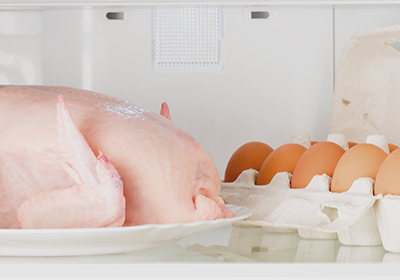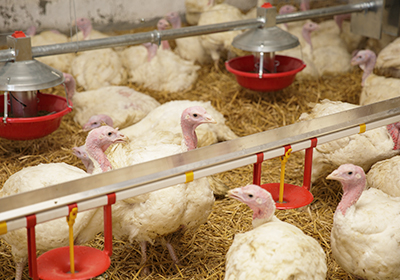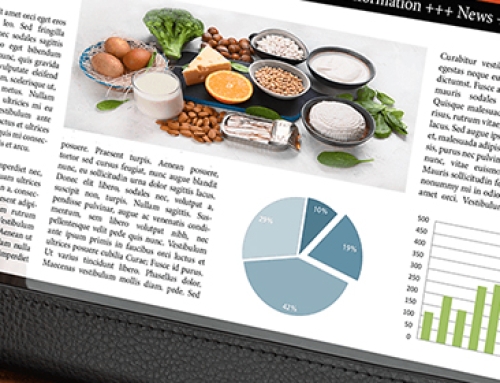Campylobacteriosis and salmonellosis were the most frequently reported zoonotic diseases in humans in the EU in 2022. However, the number of cases was still lower than during the pre-pandemic years 2018-2019. For West Nile virus, an increase of the number of infections was observed.
According to latest annual EU One Health 2022 Zoonoses Report published today by EFSA and ECDC, in 2022 there was a general increase (+44%) in cases of zoonotic outbreaks and foodborne illnesses, from 4,005 in 2021 to 5,763 outbreaks in 2022, reaching similar levels as during the pre-pandemic years
Zoonoses in Europe: data from the EU One Health Report 2022
Campylobacteriosis is the single most frequently reported zoonotic disease, with 137,107 cases. Chicken (broiler) and turkey meat was the most common source of the infections. Salmonellosis was the second most reported zoonotic disease (65,208), followed by yersiniosis (7,917), STEC infections (7,117) and listeriosis (2,738). It is important to notice that the data for campylobacteriosis and salmonellosis show stable notification rates in the last two years.

According to the EU One Health 2022 Zoonoses Report, Campylobacteriosis is the single most frequently reported zoonotic disease in 2022, with 137,107 cases. Chicken (broiler) and turkey meat was the most common source of the infections. Salmonellosis was the second most reported zoonotic disease (65,208). The most commonly implicated sources in salmonellosis outbreaks were eggs and egg products, foods made with various ingredients, and pork-based products.
Salmonella remains the most common agent in foodborne illness outbreaks (1,014 reported outbreaks in 2022, totaling 6,632 cases), consistent with previous years. Foodborne outbreaks differ from individual infection cases, as a minimum of two individuals contract the same illness from consuming the same contaminated food. The most commonly implicated sources in salmonellosis outbreaks were eggs and egg products, foods made with various ingredients, and pork-based products.
In 2022 it was observed the highest number of outbreak-related deaths in the past decade (64). Deaths were primarily attributed to Listeria monocytogenes, and were associated with a wide variety of foods, ranging from meat and dairy products to fish and vegetables.
Excepting trichinellosis and tularaemia, which have shown a significant reduction of the notification rates in 2022 (-51.9% and -29.5% respectively, from 2021), all the other zoonoses have increased from 2021 to 2022. The highest increase has been recorded for the West Nile virus, with an increment of +631.8%, due to the outbreaks occurred mainly in Italy and Greece in 2022. Other significant increments have been recorded for Q fever (+56.5%), brucellosis (+29.2%), yersiniosis (+16.3%), listeriosis (+15.9%), echinococcosis (+13.8%), M. bovis and M. caprae related tubercolosis (+13.2%) and E. coli STEC (+8.8%).
2022 was the year with the second highest number of cases of West Nile virus infections ever recorded in the EU (1,133 cases), with 2018 being the year with the highest number so far (1,612 cases). These unprecedented high numbers may be caused by more favorable climatic conditions for mosquito activity. In 2022, 431 birds and 166 horses tested positive for West Nile virus in the EU, around double the previous year’s figures. The virus also extended its geographical area, reaching previously unaffected areas (southwestern France, northern Germany, and southern Italy).
The role of the IZSVe in the development of the EU One Health Report 2022
Within Consortium “Zoonoses under a One Health perspective in the EU – ZOE”, the Istituto Zooprofilattico Sperimentale delle Venezie (IZSVe) supported EFSA and ECDC in developing the Annual Report, managing the validation and the analysis of the data collected between all the Member States, along with supporting the editorial team. The units that worked on this project have been:
Focus on salmonellosis
In 2022, salmonellosis was the second most commonly reported foodborne gastrointestinal infection in the EU after campylobacteriosis. The number of reported human cases in Europe during the year was 65,208, corresponding to a notification rate of 15.3 per 100,000 population, while in Italy 3,302 human cases were reported, corresponding to a notification rate of 5.6 per 100,000 population. Comparing the European data with that of 2021, there was no significant variation in Salmonella infections: the number of human cases slightly increased compared to 2021, while the notification rate remained constant. Similarly, the overall trend from 2018 to 2022 showed no significant increase or decrease.

The number of reported human cases of Salmonellosis in Europe during the year was 65,208, while in Italy 3,302 human cases were reported. The overall trend from 2018 to 2022 showed no significant increase or decrease. Nineteen Member States, including Italy, have achieved the Salmonella reduction targets for poultry populations for which National Control Plans are defined at the EU level.
In Europe, the proportion of hospitalized cases was 38.9% (slightly higher than in 2021), while the case fatality rate in 2022 was 0.22%. Additionally, after Spain, Italy is one of the countries most associated with travel-related infection cases.
The main serotypes detected in human infections were S. Enteritidis (67.3%), S. Typhimurium (13.1%), monophasic variant of S. Typhimurium (4.3%), S. Infantis (2.3%), and S. Derby (0.89%).
In the food sector, regarding ready-to-eat products, the percentage of sampling units positive for Salmonella spp. in the EU was very low (0.16%), with the highest levels of contamination found in meat products from broilers and in the category of spices and herbs. In non-ready-to-eat products, the positivity rate reaches 2.1%, with the highest levels of contamination found in poultry meat products like chicken and turkey.
Comparing results from slaughterhouse sampling on carcasses of different species, in the context of analyses conducted under official controls compared to those under self-monitoring by food business operators, both at the European and national levels, the former show a higher positivity rate compared to the latter for almost all species (turkeys, broilers, pigs, cattle, and sheep). In Italy, the highest positivity rates were found in turkey carcasses (34.5% positive under official control; 10.5% self-monitoring) and chicken meat carcasses (31.1% official control; 8.8% self-monitoring).
Nineteen Member States, including Italy, have achieved the Salmonella reduction targets for poultry populations for which National Control Plans are defined at the EU level. In Italy, specifically, the percentage of groups testing positive for target serotypes was 0.33% for Gallus gallus breeders, 0.95% for laying hens, 0.20% for broiler chickens, 0.07% for fattening turkeys, and 0% for breeding turkeys.
Considering the isolated Salmonella strains for which serotyping data was reported, S. Enteritidis was the most commonly reported serovar at the European level in laying hens and the second most reported in broilers, while S. Typhimurium and its monophasic variant were among the top three serovars isolated from pigs and cattle. S. Infantis is the primary serotype in terms of isolation from chicken meat and ranked among the top four serovars isolated from all the food-animal sources considered.







